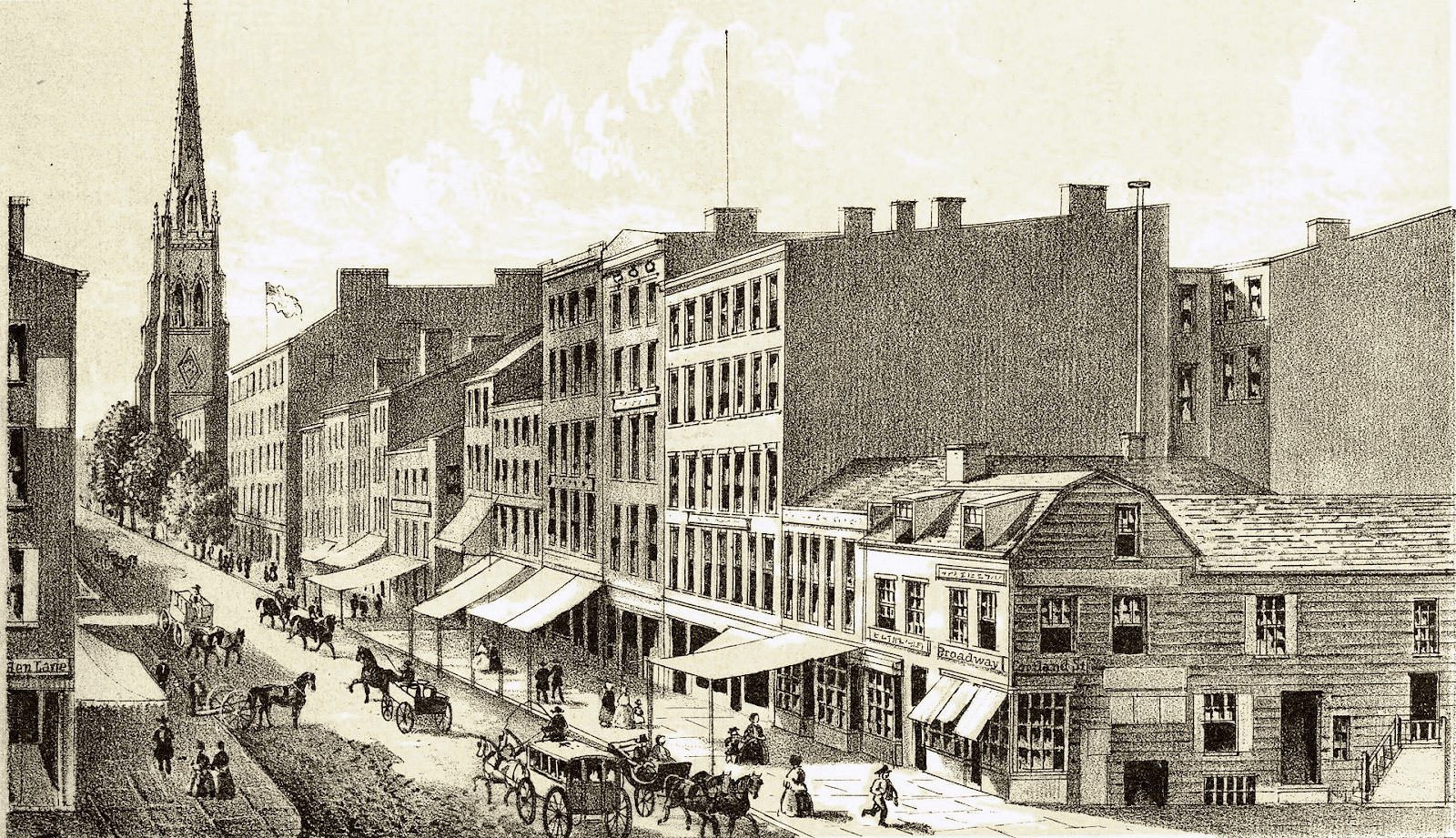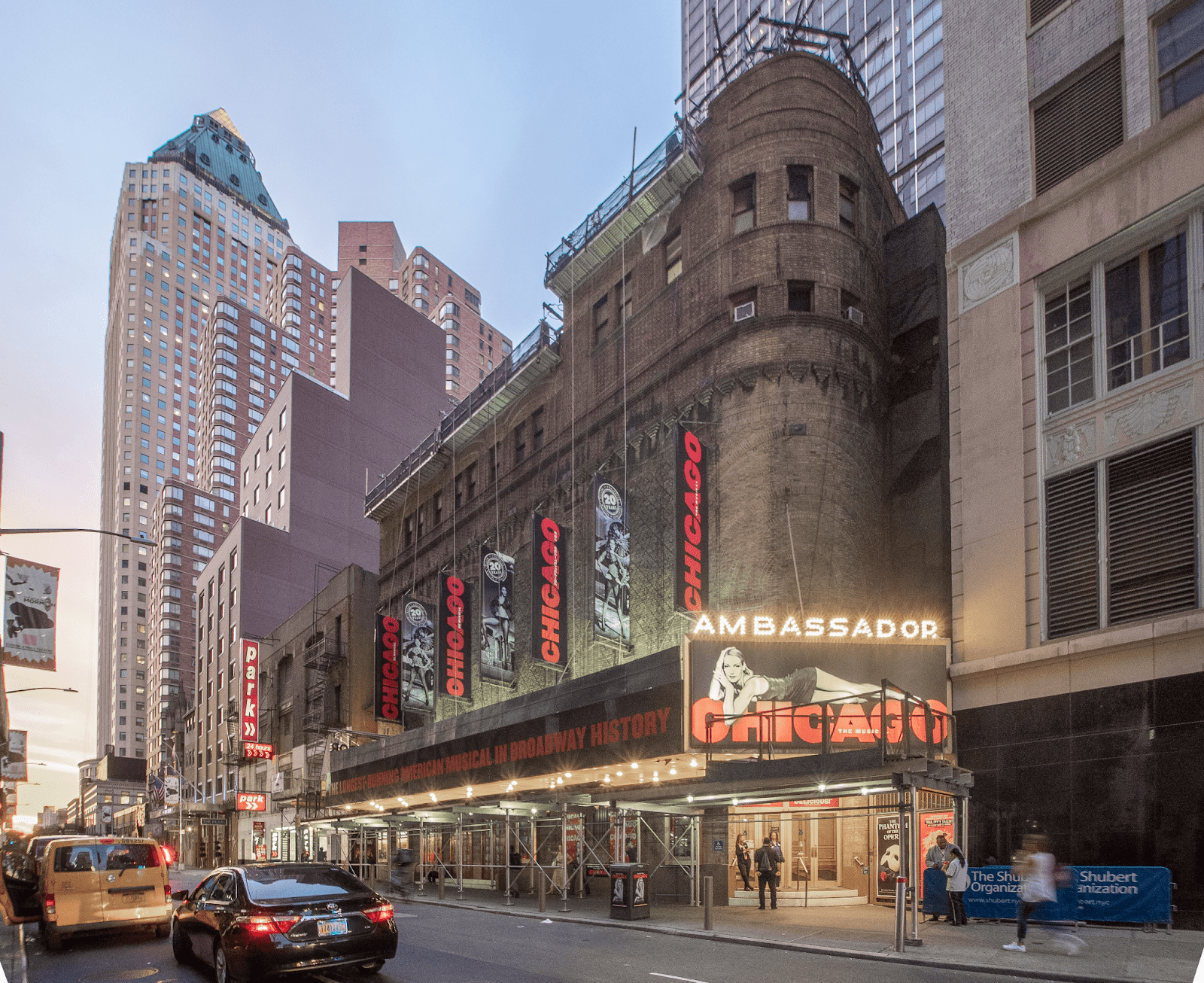This article is about the oldest and longest street in the whole of New York, the length of which reaches more than 55 km, 25 km of which accounts directly for Manhattan. It runs through the whole of Manhattan, the Bronx and then goes north through small towns and to the capital of New York state, the city of Albany. The street is also home to iconic public places, world-famous cultural institutions and a large number of architecturally significant buildings. Find out more about Broadway at manhattan-future.

Foundation and further development
Broadway is the famous longest street not only in Manhattan but throughout New York. Broadway runs from Manhattan’s Upper West Side, past Central Park, through downtown and Times Square and finally to the city center.
The history of this street begins with the ancient colonial period of the 17th century. At first, it was an ordinary path that had been trodden by Native Americans. It passed through mountains and swamps. Locals called it Wickquasgeck. Only over time, after the arrival of the Dutch on this territory, it was expanded and made the main highway connecting two small settlements: Harlem and New Amsterdam, which eventually became New York. The Dutch called it Heeren Wegh or Heeren Straat, which means “Gentlemen’s Way” or “Gentlemen’s Street”. After the city had been captured by the English, the street received the name Broadway because of its unusually large width.
In the 18th century, the city was constantly developing, so the city authorities made a decision to arrange the urban development plan. Then it was decided to accommodate all the streets in the form of a correct geographical grid. However, Broadway Street was left as it was initially, with all its wrong forms.
In the 1700s and 1800s, theaters began to appear on the street, in particular, in Union Square, and in the 1900s already around Madison Square. Also during this period, street lighting first appeared between Union Square and Madison Square. At that time, this area was called the Great White Way. In general, it is worth noting that it was because of the appearance of theaters that this street became well-known throughout the world.
It is also important to note that first of all the whole street did not have one name. Different parts of it had their own special names. However, it was in February 1899 that everything was united under a common modern name – Broadway. In 1885, telephone, telegraph and electric lines appeared in the Broadway commercial area.
It is also worth noting that by the first decade of the 20th century, the 30-block area of Broadway, stretching mainly between Times Square on 42nd Street and Sherman Square on 72nd Street, was occupied mainly by the horse business and was “completely lifeless”. However, many things changed by 1907, because car showrooms as well as car signs appeared along from Times Square to Sherman Square. Initially, this street had two-way traffic, but in the second half of the 1900s, the city authorities changed the traffic to one-way.
In 2013, a redevelopment was carried out between 35th and 42nd Streets. In 2017, through traffic was banned between 24th and 25th Streets. In 2019, pedestrian space was expanded between 33rd and 32nd Streets in the Greeley Square area. Also at the end of 2021, five blocks from 50th to 48th, from 39th to 39th and from 23rd to 21st Street were converted to public streets. During 2020, the area from 31st to 25th Street was turned into a temporary pedestrian street called NoMad Piazza.

Prominent Broadway buildings
Broadway hosts a large number of famous buildings. Among them, one can distinguish the American Surety Building; the Ansonia, Bowling Green; the Brill Building; the Corbin Building; the Cunard Building; the Equitable Building; the Flatiron Building; Gilsey House; the Gorham Manufacturing Company Building; the Home Life Building; International Mercantile Marine Company Building; the Morgan Stanley Building; One Times Square; the Paramount Building; the Standard Oil Building; Trinity Church; Union Theological Seminary; the United Palace. There are also the world-famous so-called Broadway theaters, such as the Ambassador Theater, the August Wilson Theater, the Belasco Theater, the Booth Theater, the Bernard B. Jacobs Theatre, the Broadhurst Theater, etc.